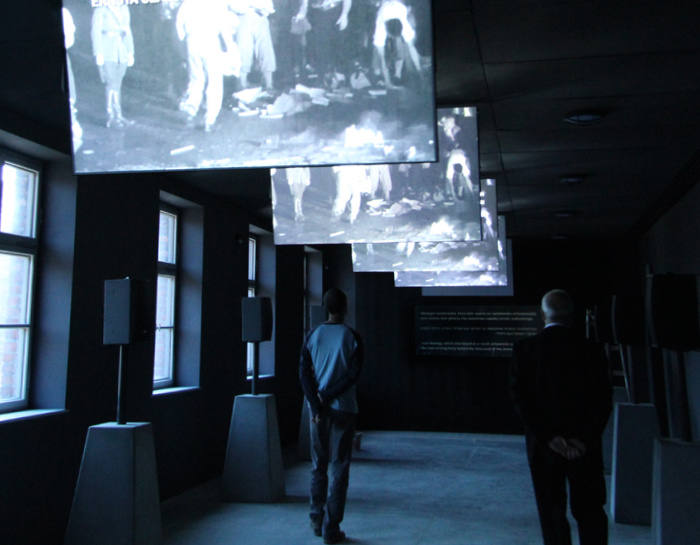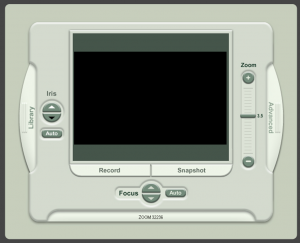
The Ideology Room is one of many rooms at the new, permanent exhibition about the Jewish Holocaust, in the former Nazi concentration camp in Auschwitz, Poland. Housed in a red brick barracks known as Cell Block 27,The Jewish Memorial Pavilion opened its doors in June 2013.
In this project I was working alongside the Studio de-Langa team of architects, Prof. Adi Stern (head of Visual Communication department at the Bezalel Academy of Art and Design), designer Ori succary and Artist Yael Burstein.
The purpose of this room is to illustrate the Nazi ideology by using all senses. Most of the soundtrack is made up form the speeches that appear on the video screens. The rest is made from sounds originating in parades and ceremonies from the Nazi period.
Designing the Else – sound for mobile
ELSE is a visionary mobile phone developed by Israeli technology firm Else (formerly Emblaze).
Ishai Adar was in charge of the sound design for the product – the complete user audio experience when using the device.
After long months of research and experimentation, Adar ended up with around fifteen very short digital sounds. The main objective was to make those small sounds integrate with the visual graphics – for example opening menus, clicking a phone number on the key-pad, or receiving different kinds of alerts.
The ELSE mobile phone was heavily inspired by sci-fi culture: a mobile phone that was created with user experience in mind. Ishai delved into creating those almost futuristic, synergic, ultra bright sounds, but had to keep the sounds functional and efficient. The result was a seamless compromise between semi-mechanical “clicks” and cooler digital blips.
the digital versus the mechanical approach:
The “Grab and Release” element of the ELSE user interface, showing the slidebars (also known as “gauges”). The example shows the differences between the mechanical (right) and digital (left) approaches.
|
The digital versus the mechanical II:
These clips show the device’s built-in camera “zoom” feature. Again we can see the synergy between the digital and mechanical approaches: The high tone (divided to two different pitches for the “zoom in” and “zoom out”), creates a sharp and smooth transition. The mechanical “ticks” create an illusion of movement.
|
Fast scrolling the contact list & Idle operations:
These show the “scroll” feature. When the user touches his finger to the contacts list, the “Trrrr” sound creates an association of data movemnet. In the main “idle” screen, a combination of two sounds – touch and drag – allows audible navigation. Both manipulate time and duration to keep sync tight.
|
The Else device was developed by The Else company (formally emblaze)
UI: Elements
Graphic design and branding : The one and only Sugapusher
IAF and USAF by Electronic Arts – computer game sound design
IAF (Israeli Air Force) and USAF (United States Air Force) are two computer games and flight simulators published by computer game giant Electronic Arts in the late 1990s.
Ishai Adar, collaborating with Israeli game designers Pixel, was in charge of the sound design for the simulators.
Tower-to-aircraft radio instructions, Jet engines (on ground and in flight), after-burner growls, weapon machinery and cockpit buttons and alerts, were among the hundreds of sounds in these highly advanced and popular computer games.
Adar experimented with primitive techniques in order to capture the cockpit’s true color. Among his methods were recording sounds through old telephones, reverberating small engines in huge pipes, and digitally manipulating factory ambiences. The result is considered a classic among computer game sound designers, and is an integral part of the state-of-the-art, award-winning games.
Here is a taste from USAF:
surgivision’s “lo” – Sound design for remote interface.
SurgiVision, Inc. is a leader in the emerging field of MRI-guided interventions, creating innovative platforms for performing the next generation of minimally invasive surgical procedures in the brain and heart. In 2001 Ishai designed navigation and control sounds for one of their systems called “LO”.
